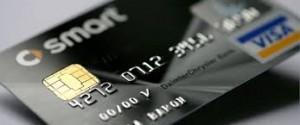
The EMV Transition. Sorting Fact from Fiction.
A lot has been written about the ongoing transition from magnetic stripe to chip cards, and in spite of best efforts to communicate “just the facts,” a few misunderstandings have surfaced. Our goal at TSYS Merchant Solutions has always been to provide open and honest information about the transition. In that spirit, here are a few myths we’ve been hearing, along with facts (from our own experts and industry sources including “Chips in the U.S. – The Facts” by Dr. Toni Merschen ), that debunk them.
Myth #1. Anyone who accepts card-present transactions must upgrade to chip technology.
There is no mandate forcing businesses accepting in-person (or card-present) transactions to adopt chip enabled terminals and other technology. However, there is a risk. If you accept a chip card transaction (by swiping the magnetic stripe on the back of a chip card), and the transaction turns out to be fraudulent, you will be liable for all costs and fines associated with the transaction. The October 1 liability shift transferred liability from issuers to the party that is least chip enabled in the event of a fraudulent chip card transaction.
Myth #2. If I didn’t upgrade to a chip card terminal by the October 1 liability shift deadline, I won’t be able to accept card transactions.
Not true. The liability shift deadline did not render all non-chip-enabled terminals inoperable. Your non-chip-enabled terminal still works and you can accept card transactions with it, as long as you are comfortable assuming the added risk. Again, if you accept a fraudulent chip card transaction and do not have a chip-enabled terminal, you are liable for all costs and fines.
Myth #3. Transitioning to chip cards doesn’t reduce fraud.
The fact is, EMV (Europay, MasterCard and Visa–these are the three companies who originally created the standard) has been a tremendous success in preventing fraud around the world. Wherever EMV is implemented comprehensively, fraud is reduced. Regularly published fraud statistics from many national banking and regulatory authorities such as the Banque de France, the UK Payments Administration, and Interac in Canada prove the point. EMV reduces counterfeit and lost and stolen fraud in card-present POS and ATM applications, and provides strong, dynamic cardholder authentication in card-not present (CNP) scenarios.1
Myth #4. EMV is not secure enough.
As a matter of fact, EMV is based on strong cryptography and elaborate key management; a fundamental EMV principle is to digitally sign payment data to ensure transaction integrity. As opposed to magnetic stripe technology, a chip is extremely difficult to crack; card authentication and PIN verification are performed automatically and objectively by the chip. Although EMV has been heavily scrutinized by criminals and the academics, there have been no reported real-life, in-market, or business relevant breaks of chip card technology.2
eBook: EMV, Tokenization, & Encryption: The Path to Securing Your Small Business
We offer a look at what’s driving the EMV transition and what it means for business owners accepting in-person or card-present transactions. Download Now
Myth #5: EMV is already outdated and of no use in a world moving to mobile and contactless payments.
Ever since the first EMV implementation nearly a decade ago, EMV specifications have been continuously monitored by EMVCo and other chip card stakeholders and updated to meet the changing needs of the payment industry. And, most mobile and contactless payments are based on EMV specifications.3
Myth #6: The business case for upgrading to EMV in the U.S. is not positive; the benefits do not outweigh the costs.
While this may have been true five or ten years ago, today the U.S. business case is definitely positive. The cost of fraud in the U.S. continues to rise, not only the direct cost of lost goods and services, but the additional costs associated with protecting against fraud and cleaning up after an incident. For example, in the wake of recent well-known data breaches, millions of cards had to be reissued, and customer service costs for issuers and merchants increased. Balance these higher expenses against the lower cost of producing chip cards (thanks to increasing efficiency and lower chip costs), the lower cost of POS terminals, and the fact that big issuers, acquirers and processors in the U.S. are already issuing chip cards, and you come up with a positive business case for making the switch.4
1 “Chips in the U.S. – The Facts” by Dr. Toni Merschen
2 Ibid.
3 Ibid.
4 Ibid.
Source: TSYS Merchant Solutions | 10/21/2015
NOTE: MediPro, Inc. offers several different credit card processing programs which have a solid integration with the CureMD PM/EHR total solution and the Lytec PM software. As patient payment responsibilities become more prevalent, medical offices need to be able to accept credit cards with low processing fees. Simply fax MediPro a current monthly credit card processing statement to 1.888.232.6556 and we can show you the potential cost savings!
- 1.800.759.1321
- Atlanta, GA & Phoenix, AZ
- [email protected]
